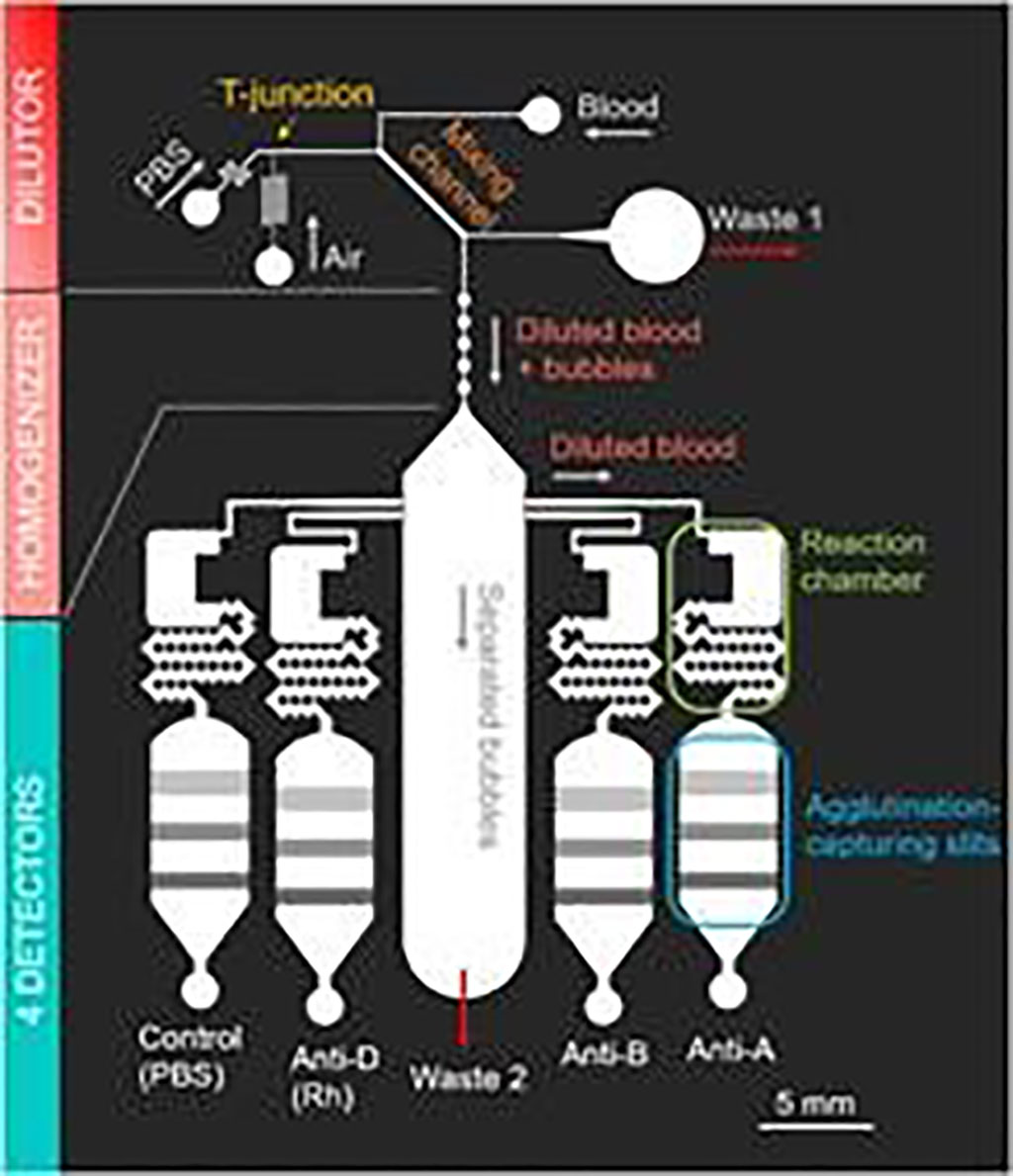Micro-Lab on a Chip Detects Blood Type Within Minutes
By LabMedica International staff writers
Posted on 27 Jul 2020
Blood transfusion, if performed promptly, is a potentially life-saving intervention for someone losing a lot of blood. However, blood comes in several types, some of which are incompatible with others. Transfusing an incompatible blood type can severely harm a patient.Posted on 27 Jul 2020
There are four major blood types, O, A, B, and AB. These types differ based on the presence or absence of structures called A antigens and B antigens on the surfaces of red blood cells. Blood can be further divided into positive and negative types based on the presence or absence of D antigens on red blood cells. Medical professionals usually tell a patient's blood type with tests involving antibodies against the A and B antigens.

Image: Schematic diagram of the fully-automatic blood-typing chip exploiting bubbles for quick dilution and detection (Photo courtesy of Tokyo University of Science).
Scientists at the Tokyo University of Science (Tokyo, Japan) developed a fully automated chip that can quickly and reliably determine a patient's blood type. The chip contains a micro-sized "laboratory" with various compartments through which the blood sample travels in sequence and is processed until results are obtained. To start the process, a user simply inserts a small amount of blood, presses a button, and waits for the result. Inside the chip, the blood is first diluted with a saline solution and air bubbles are introduced to promote mixing. The diluted blood is transported to a homogenizer where further mixing, driven by more intensely moving bubbles, yields a uniform solution.
Portions of the homogenized blood solution are introduced into four different detector chambers. Two chambers each contain reagents that can detect either A antigens or B antigens. A third chamber contains reagents that detect D antigens and a fourth chamber contains only saline solution, with no reagent, and serves as a negative control chamber in which the user should not observe any results. Antigen-antibody reaction will cause blood to agglutinate, and by looking at which chambers have hemagglutination, the user can tell the blood type and whether the blood is positive or negative. The team screened blood samples from 10 donors and obtained accurate results for all 10 samples. The time needed to determine a single sample's blood type was only five minutes.
Masahiro Motosuke, PhD, an associate professor and co-author of the study, said, “The advancement of simple and quick blood test chip technologies will lead to the simplification of medical care in emergency situations and will greatly reduce costs and the necessary labor on parts of medical staff.” The study was originally published online on April 14, 2020 in the journal Biomicrofluidics.
Related Links:
Tokyo University of Science














